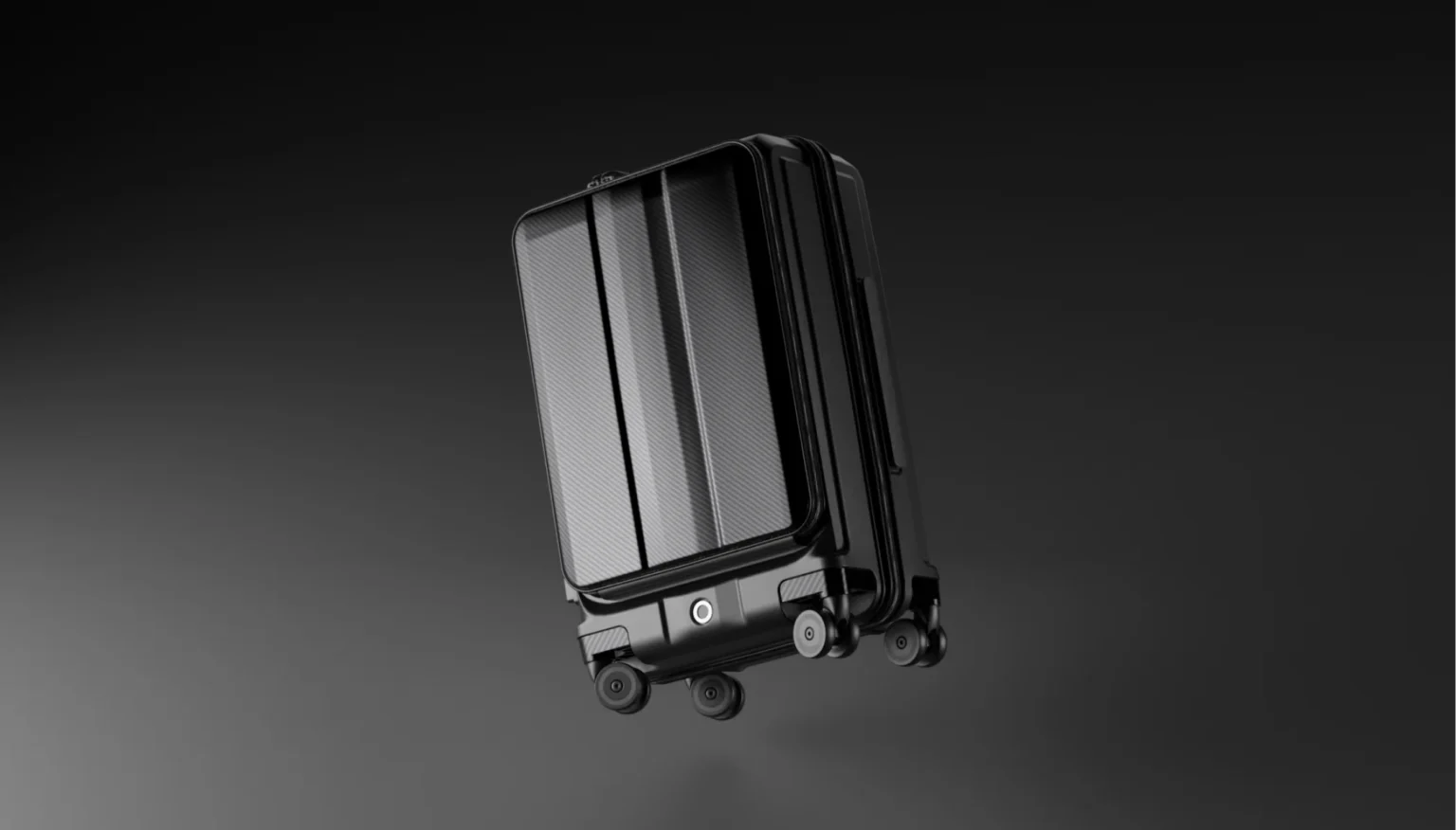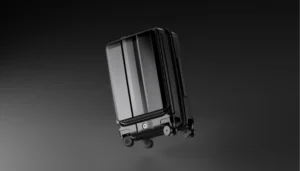In the dynamic world of e-commerce, the visual appeal of product images plays a pivotal role in capturing the attention and interest of potential customers. When it comes to luggage and travel accessories, showcasing a suitcase in the best light possible is not just about displaying a product—it’s about telling a story, creating a connection, and inspiring the desire to embark on new adventures.
In this article, we delve into 12 suitcase photography tips and ideas tailored for e-commerce brands. From selecting the right suitcase to weaving a visual narrative, these insights aim to elevate your product photography game, helping your brand stand out in the competitive online marketplace.
Choose the right suitcase
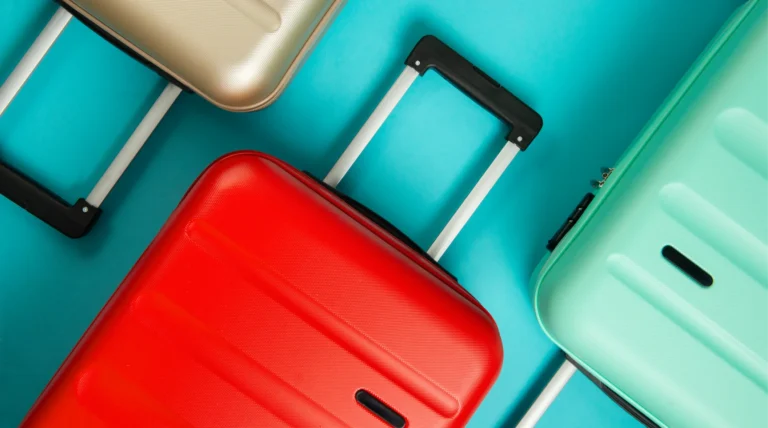
Selecting the right suitcase is akin to choosing a visual ambassador for your brand. The aesthetic alignment and meticulous upkeep of the chosen suitcase reflect the core identity of your products, setting the stage for captivating and brand-aligned photography.
When choosing a suitcase for your e-commerce photography, opt for one that mirrors the overall aesthetic and values of your brand. Whether it is sleek and modern or classic and timeless, the suitcase should seamlessly integrate into the visual story you’re telling.
A polished appearance is key. Before each photoshoot, meticulously clean and inspect the suitcase to eliminate any blemishes or scuffs. A well-maintained suitcase looks more appealing and communicates a commitment to quality and attention to detail.
Harmonize the suitcase color with your brand palette. Neutral tones often work well, as they provide a versatile backdrop for a variety of settings. Additionally, consider the texture of the suitcase material; whether it’s leather, hardshell, or fabric, the texture should complement your brand’s image.
If your brand offers multiple suitcase models, take the opportunity to showcase a variety of options. This not only caters to diverse customer preferences but also demonstrates the versatility of your product line.
Ensure that any branding elements on the suitcase, such as logos or monograms, are prominently displayed. These details contribute to brand recognition and reinforce the authenticity of your products.
Incorporate the chosen suitcase seamlessly into your visual narrative, ensuring it becomes an authentic representation of your brand. Thus, the suitcase becomes a compelling visual asset, inviting customers to explore your unique offerings.
Set the scene
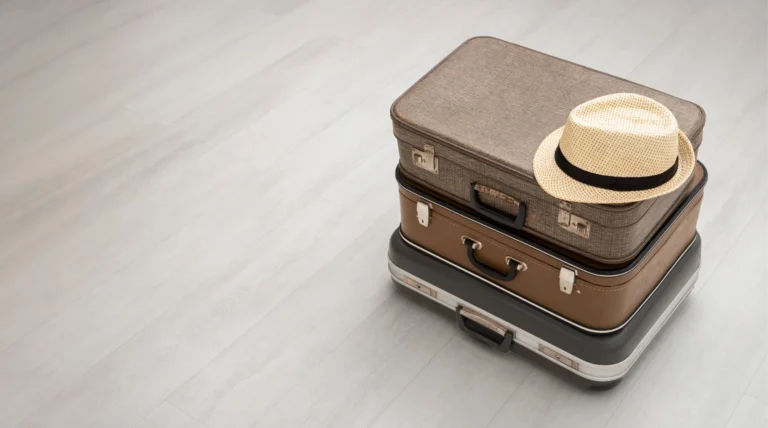
Creating a captivating backdrop for your suitcase photography is akin to crafting a stage for your product to shine. The choice of background color, texture, and setting contributes significantly to the overall visual appeal and storytelling potential of your images.
- Neutral Backgrounds for Versatility: Opt for neutral-colored backgrounds to avoid distractions and ensure the focus remains on the suitcase. Whites, grays, or muted tones work well, providing a clean canvas that adapts seamlessly to various marketing materials and platforms.
- Consider Textures and Patterns: Introduce subtle textures or patterns to add visual interest to the background. This can be achieved through backdrops, fabrics, or even textured surfaces. Just ensure that it complements rather than competes with the features of the suitcase.
- Create a Lifestyle Setting: Context matters. Place the suitcase in settings that resonate with your target audience’s lifestyle. Whether it’s a sophisticated hotel lobby, a bustling airport, or a cozy home, the background should evoke emotions and aspirations associated with your brand.
- Experiment with Lighting Effects: Lighting plays a significant role in setting the mood. Experiment with different lighting effects, such as dramatic shadows or soft diffused light, to enhance the ambiance. This adds depth to your images and contributes to the overall visual appeal.
- Consistency Across Photoshoots: Maintain a consistent backdrop across multiple photoshoots to establish a recognizable and cohesive brand identity. Consistency reinforces your brand message and makes it easier for customers to identify your products in various contexts.
- Utilize Props Thoughtfully: Incorporate props that complement the suitcase and enhance the storytelling element. For example, travel essentials like passports, maps, or accessories can add depth and context to your images, making them more relatable for potential customers.
Consistency in the backdrop across various photoshoots reinforces your brand’s identity, creating a cohesive and polished look. Thoughtful integration of textures, patterns, and contextual settings elevates the storytelling element, making your suitcase photography visually engaging and resonant.
Lighting is key
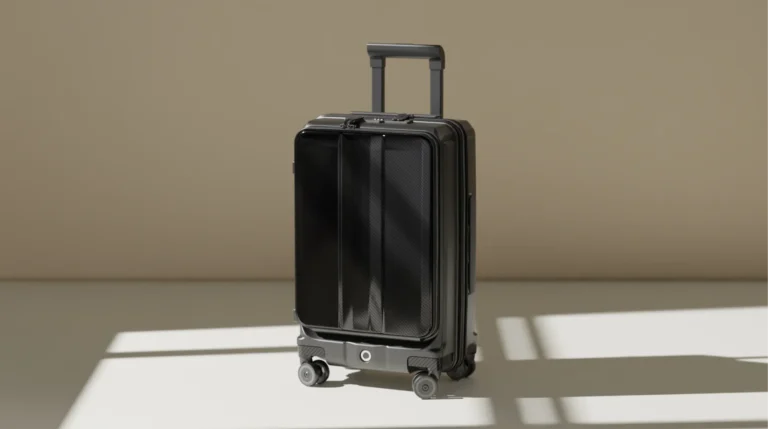
Mastering lighting is a fundamental aspect of capturing the essence and details of your suitcase. Whether harnessing the soft glow of natural light or utilizing professional lighting equipment, the right lighting technique enhances colors, minimizes shadows, and accentuates the features of your product.
Whenever possible, leverage natural light for your photoshoots. Position your setup near a window to allow soft, diffused light to illuminate the suitcase naturally. Natural light enhances colors and details, providing a fresh and authentic look.
In situations where natural light is limited, invest in professional lighting equipment. Softboxes and diffusers can help create a controlled and evenly lit environment, reducing harsh shadows and highlighting key features of the suitcase.
Be mindful of shadows that may obscure important details. Experiment with lighting angles to minimize shadows while adding depth to your images. Striking the right balance ensures that the suitcase is well-lit without losing dimensionality.
Maintain consistent lighting across all shots to establish a cohesive look for your product catalog. This consistency contributes to a professional and polished presentation, making your brand more visually appealing to potential customers.
Consistent and well-managed lighting ensures that your suitcase is showcased in its best possible light. Striking a balance between natural and artificial lighting techniques creates visually appealing images that not only highlight details but also evoke the desired mood for your brand.
Focus on composition
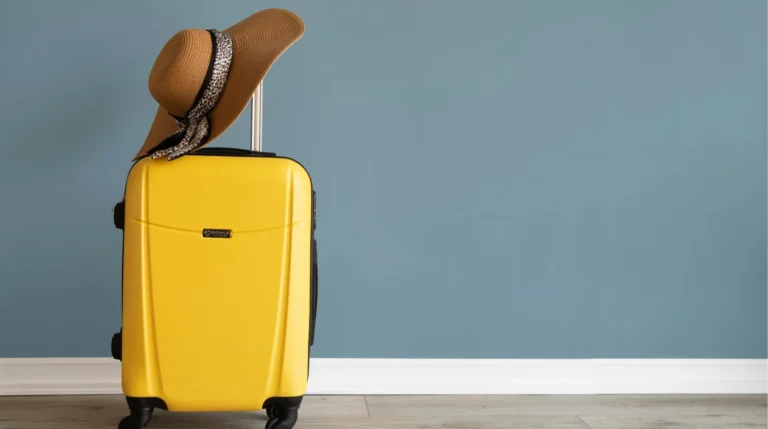
Composition is the silent conductor that guides the viewer’s gaze through the symphony of your suitcase photography. Implementing the rule of thirds, experimenting with angles, and utilizing leading lines contribute to a harmonious and visually engaging composition.
Rule of Thirds
Apply the rule of thirds by dividing your frame into nine equal parts with two horizontal and two vertical lines. Position key elements, such as the suitcase, along these lines or at their intersections to create a visually balanced and engaging composition.
Experiment with Angles
Explore various angles to showcase the suitcase from different perspectives. Capture shots from eye level, above, and even below to highlight unique details and present a comprehensive view of the product.
Use Leading Lines
Guide the viewer’s eyes towards the suitcase by incorporating leading lines in your composition. This could be a path, a pattern, or any element that naturally directs attention to the main subject.
Frame the Shot
Consider framing the suitcase within the environment. Utilize doorways, windows, or other elements to add context and draw attention to the product. Effective framing enhances the visual appeal and storytelling aspect of your photographs.
Negative Space for Emphasis
Embrace negative space to emphasize the central subject—the suitcase. A clutter-free background allows the viewer to focus on the product, creating a clean and visually pleasing composition.
An intentional approach to composition ensures that your suitcase takes center stage, capturing attention and creating a lasting impression. By experimenting with various angles and adhering to composition principles, your product images become a visual feast for your audience.
Highlight features
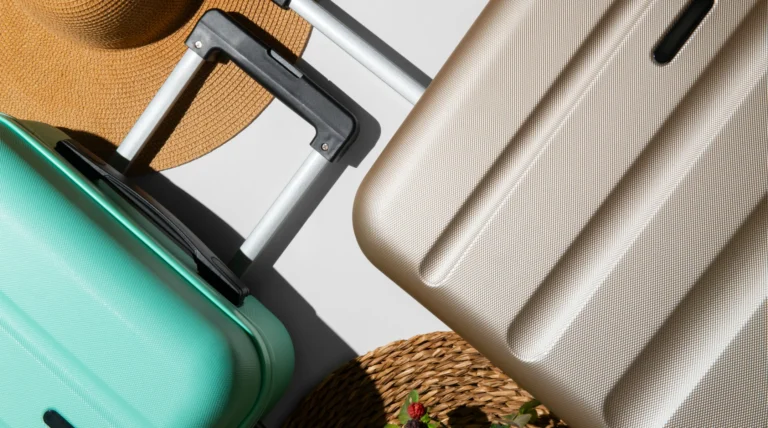
The features of your suitcase are the stars of the show, each deserving its moment in the spotlight. Utilizing close-up shots, multi-angle presentations, and meticulous attention to detail allows customers to intimately explore and appreciate the craftsmanship and functionality of your product.
- Close-Up Shots for Detail: Capture close-up shots to highlight intricate details such as stitching, zippers, handles, and any distinctive features unique to your suitcase. This allows customers to appreciate the craftsmanship and quality of your product.
- Multi-Angle Presentation: Present the suitcase from various angles to offer a 360-degree view. This not only showcases its features but also provides a more detailed and immersive experience for online shoppers.
- Explore Functional Components: Demonstrate the functionality of different components, such as expandable sections, specialized compartments, or unique organizational features. This helps customers visualize how the suitcase can cater to their specific needs.
- Macro Photography for Texture: Utilize macro photography to capture the texture of the material. Whether it’s smooth leather, rugged fabric, or a sleek hardshell, close-up shots emphasizing texture add a tactile dimension to the online shopping experience.
- Use Consistent Styling: Maintain a consistent styling approach across feature shots to create a cohesive and professional look. Consistency ensures that customers can easily navigate through the product images while focusing on key features.
With a focus on highlighting features, your suitcase photography becomes a detailed exploration, offering customers a comprehensive understanding of the unique attributes that set your product apart. Through consistent styling and attention to detail, your suitcase stands as a testament to quality and design.
Incorporate lifestyle shots
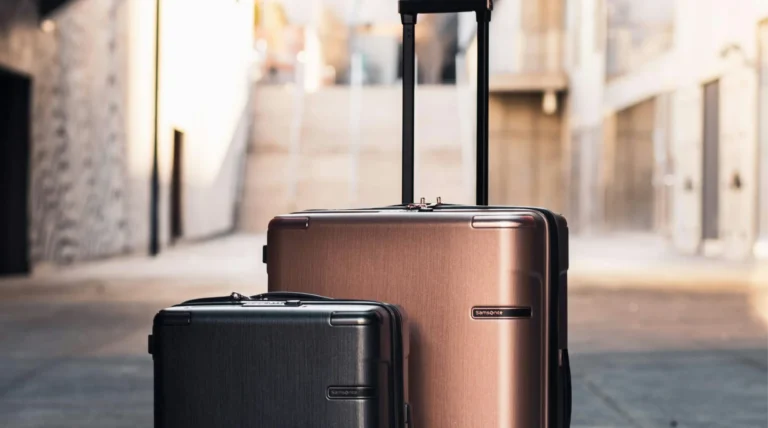
Transport your customers into a world of possibilities by infusing lifestyle into your suitcase photography. Lifestyle shots provide a tangible connection, allowing potential buyers to envision themselves using the product in real-life scenarios.
Place the suitcase in environments that align with your target audience’s lifestyle and aspirations. Whether it’s a bustling airport, a stylish hotel lobby, or a cozy home, the setting should evoke a connection with your customer base.
Develop a visual narrative around the suitcase. Create a series of images that showcase the journey—from packing for an adventure to arriving at a destination. This storytelling approach engages customers emotionally and enhances the overall brand experience.
Incorporate models or individuals interacting with the suitcase to add a human touch. This not only provides a sense of scale but also allows customers to visualize themselves using the product in real-life situations.
Illustrate the versatility of your suitcase by showcasing it in different scenarios. For instance, display it as a carry-on, a weekend getaway companion, or an essential business travel accessory. Highlighting diverse use cases broadens its appeal to a wider audience.
Keep lifestyle shots authentic and relatable. Avoid overly staged or unrealistic scenes, as customers are more likely to connect with images that reflect genuine and attainable experiences.
Through carefully crafted lifestyle shots, your suitcase becomes a companion in the journeys and experiences of your customers. By including human elements and conveying authentic emotions, your brand story unfolds, fostering a relatable and aspirational connection with your audience.
Tell a story
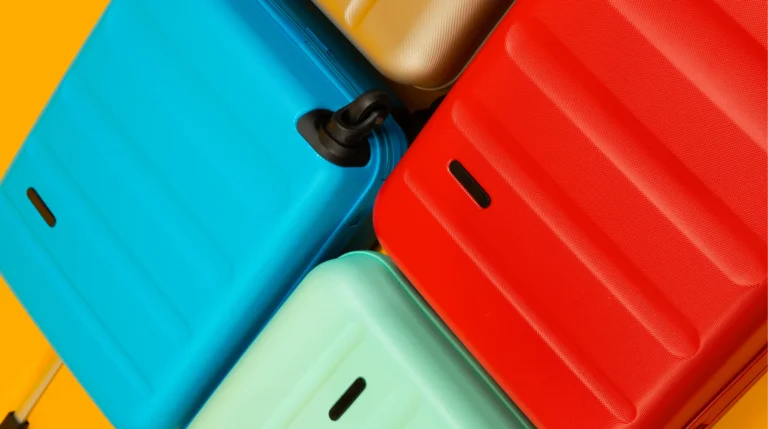
Elevate your suitcase photography from a mere display of products to a captivating narrative. Creating a visual story around your suitcase engages customers emotionally, offering them a journey that extends beyond the physical features of the product.
Create a Sequential Storyline
Develop a series of images that unfold a sequential storyline. From packing essentials to embarking on a journey, guide your audience through a visual narrative that resonates with the lifestyle your brand promotes.
Utilize Props to Enhance Storytelling
Thoughtfully incorporate props that contribute to the narrative. Travel essentials like passports, boarding passes, and destination-specific items can enhance the storytelling element, immersing viewers in the adventure you’re portraying.
Showcase Different Travel Scenarios
Illustrate a variety of travel scenarios to cater to diverse customer interests. Whether it’s a business trip, a beach vacation, or a weekend getaway, depicting different contexts ensures that your suitcase appeals to a broad audience.
Convey Emotions and Experiences
Capture moments that convey emotions and experiences associated with travel. Whether it’s the excitement of exploration, the tranquility of a serene destination, or the joy of a reunion, evoke feelings that resonate with your target audience.
Consistent Storytelling Across Platforms
Maintain a consistent storytelling approach across your e-commerce platform, social media, and marketing materials. A unified narrative reinforces your brand identity and creates a cohesive experience for customers interacting with your products.
A well-told story through your suitcase photography becomes a powerful tool, connecting with customers on a deeper level. Whether through sequential imagery, the use of props, or the conveyance of emotions, your brand narrative becomes an integral part of the customer’s experience.
Play with props
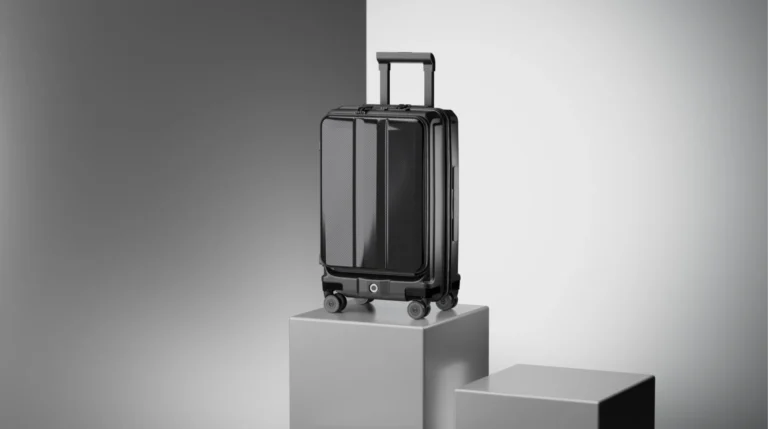
Props add layers and context to your suitcase photography, transforming it into a visually rich and dynamic experience. Thoughtfully chosen props contribute to the overall theme, creating a cohesive and aesthetically pleasing composition. Consider the following tips:
a. Relevance to Lifestyle: Choose props that align with the lifestyle your brand promotes. For example, if your suitcase caters to adventure seekers, include items like hiking boots, a map, or camping gear to reinforce the outdoor exploration theme.
b. Maintain Visual Harmony: Ensure that props seamlessly integrate with the overall composition. Avoid clutter and distractions by selecting props that enhance rather than compete with the main subject—your suitcase.
c. Showcase Practical Use: Demonstrate the practical use of the suitcase by incorporating items typically packed for a specific type of trip. This not only provides context but also helps potential customers visualize the functionality of the product.
d. Experiment with Stylistic Elements: Use props to add stylistic elements to your images. Consider incorporating flowers, vintage items, or other accessories to enhance the visual appeal and create a unique atmosphere.
e. Focus on Quality Over Quantity: While props can enhance your images, remember that less is often more. Focus on a few carefully chosen props that contribute meaningfully to the story you’re telling and the aesthetic you’re aiming to achieve.
By integrating props, your suitcase photography gains depth and resonance. Balancing relevance, visual harmony, and stylistic elements ensures that props enhance rather than overpower the main subject. This approach elevates the storytelling aspect and makes your product images visually captivating.
Consider scale
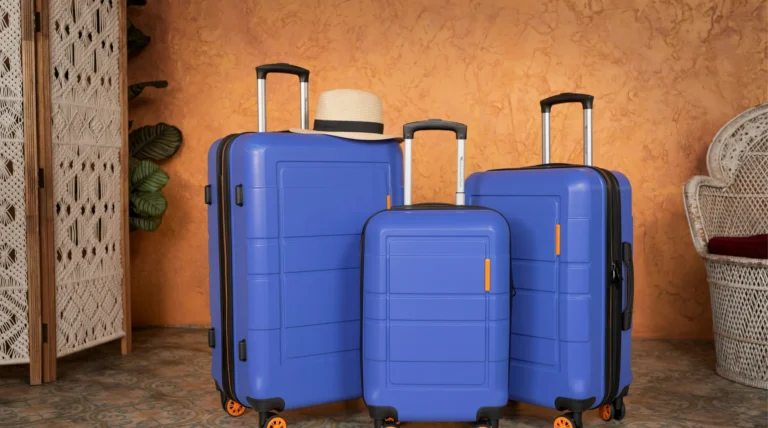
Effective scale representation is pivotal in managing customer expectations and aiding their purchasing decisions. Displaying the suitcase in context, utilizing models or mannequins, and emphasizing expandable features contribute to a well-rounded understanding of the product’s size and dimensions.
Place the suitcase among other objects that provide a visual reference for scale. This could include common travel accessories, such as a passport, a pair of shoes, or a laptop, to help customers gauge the size of the suitcase.
If applicable to your brand, consider using models or mannequins to showcase how the suitcase looks when carried or in use. This not only provides a sense of scale but also allows potential customers to visualize themselves using the product.
If your suitcase has expandable features, capture images that showcase both the compact and expanded states. This demonstrates the versatility of the product and provides a practical understanding of its size in different scenarios.
If your brand offers suitcases in various sizes, display them together to highlight the range. This helps customers choose the size that best suits their needs and preferences.
Ensure consistency in scale representation across your product catalog. This helps customers compare different suitcase models and make informed decisions based on their specific requirements.
Through scale representation, your suitcase photography provides a clear and practical view of the product. Consistency in showcasing different use cases, highlighting expandable features, and maintaining uniformity across product sizes ensures that customers can confidently select a suitcase that suits their specific needs.
Capture details
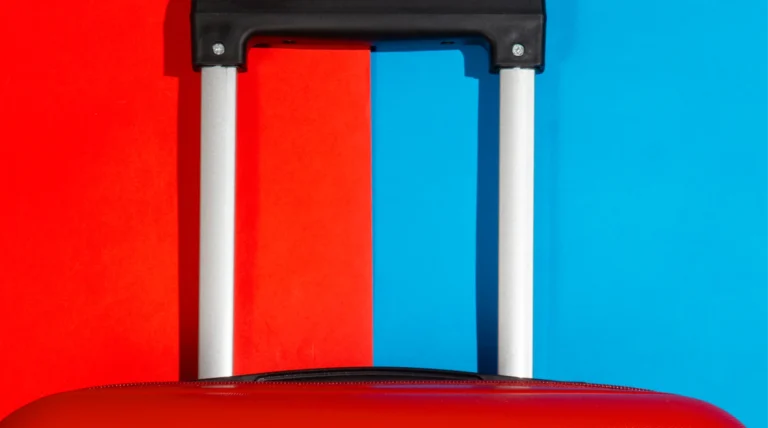
Zooming in on the intricate details of your suitcase enhances transparency and authenticity. Close-up shots of materials, stitching, branding elements, and hardware provide customers with a tactile understanding of the product’s quality and craftsmanship.
- Close-Up Shots of Material and Texture: Zoom in on the material and texture of the suitcase using close-up shots. Whether it’s leather, fabric, or a hardshell, detailed images provide customers with a tactile understanding of the product.
- Showcase Unique Stitching and Design Elements: Draw attention to any unique stitching patterns, design elements, or embellishments that make your suitcase stand out. This not only adds aesthetic value but also communicates the craftsmanship invested in the product.
- Highlight Branding Elements: Ensure that branding elements, such as logos and monograms, are prominently featured in your photographs. Consistent and well-presented branding reinforces brand recognition and builds trust with customers.
- Focus on Zippers, Handles, and Hardware: Capture close-ups of zippers, handles, and any hardware details that contribute to the functionality and durability of the suitcase. These images help customers assess the practical aspects of the product.
- Maintain Consistent Image Quality: Consistency is key when capturing details. Ensure that the quality of close-up shots remains high across all images, providing customers with a clear and accurate representation of the suitcase’s features.
By capturing details, your suitcase photography becomes a showcase of precision and meticulous design. Whether focusing on material texture or highlighting unique stitching, customers gain a comprehensive view of the suitcase’s features, fostering trust in the product.
Show versatility
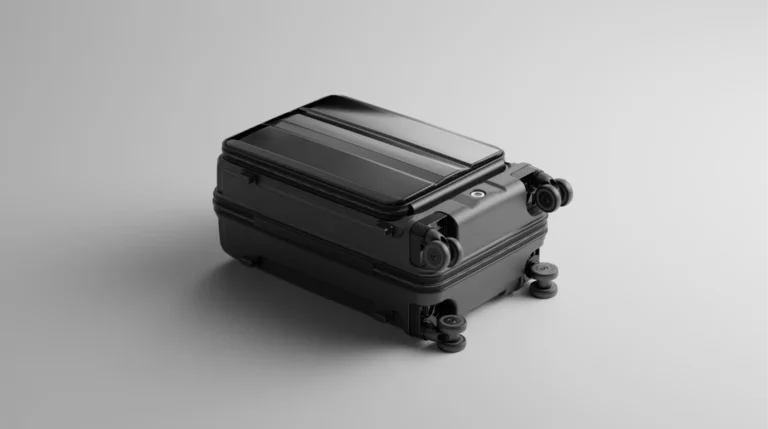
Highlighting the versatility of your suitcase broadens its appeal and demonstrates its adaptability to diverse travel needs. Displaying different use cases, showcasing packing options, and presenting expandable features contribute to an understanding of the product’s practicality and flexibility.
Illustrate how the suitcase can be utilized for different types of travel, such as business trips, weekend getaways, or family vacations. Showcasing its versatility ensures that customers see it as a practical and adaptable travel companion.
Provide images that demonstrate how the suitcase can be packed efficiently and organized effectively. This helps customers visualize its capacity and functionality, addressing potential concerns about packing convenience.
If applicable, emphasize whether the suitcase meets carry-on size restrictions for airlines. Many travelers prioritize luggage that can be brought on board, making this feature a significant selling point.
If the suitcase has expandable compartments, showcase this feature to highlight its flexibility in accommodating additional items. Customers appreciate the option to adjust the suitcase’s capacity based on their specific needs.
Showcase how the suitcase seamlessly transitions from a travel accessory to a practical storage solution for everyday use. Emphasizing its functionality beyond the confines of travel broadens its appeal to a wider audience.
By showcasing versatility, your suitcase photography becomes a visual testament to the product’s adaptability. Illustrating its use in various travel scenarios and emphasizing its practicality beyond the journey enhances its appeal, catering to a wider audience.
Edit professionally
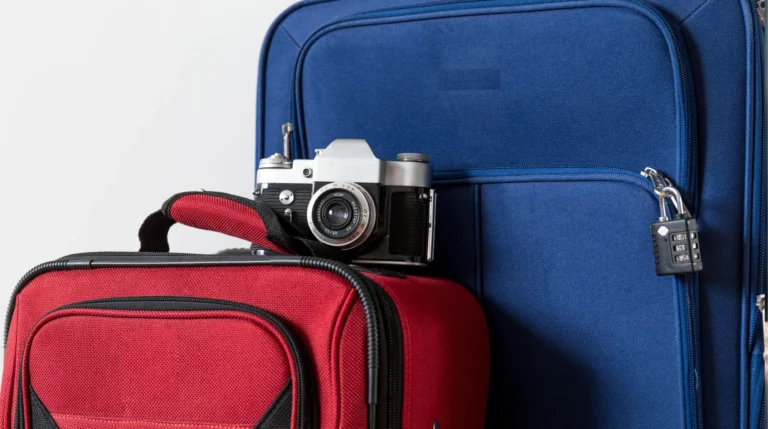
Professional editing is the final brushstroke that refines and unifies your suitcase photography. Adjusting color balance, enhancing contrast, removing distractions, and optimizing images for web usage contributes to a consistent, polished, and visually appealing presentation. Here’s how to edit your suitcase photos effectively:
Adjust Color Balance and Exposure
Use photo editing software to fine-tune color balance and exposure levels to ensure an accurate representation of the suitcase’s colors and details.
Enhance Contrast and Sharpness
Increase contrast and sharpness to make the suitcase stand out and appear more defined. This helps emphasize important features and enhances overall image clarity.
Remove Blemishes and Distractions
Retouch images to remove any blemishes, scratches, or distractions that may detract from the visual appeal of the suitcase. A clean and polished image contributes to a professional presentation.
Maintain Consistency Across Images
Ensure that editing adjustments are consistent across all images in your product catalog. This maintains a cohesive look and ensures that customers receive a uniform viewing experience.
Resize and Optimize for Web
Resize and optimize images for web usage to ensure fast loading times and optimal display on e-commerce platforms. Compressing images while preserving quality helps enhance the overall user experience.
Through professional editing, your suitcase photography achieves a refined and cohesive look. Consistency in image quality, color correction, and web optimization ensures that your product images are not only visually engaging but also optimized for seamless online presentation.
Wrapping up
As the digital marketplace continues to evolve, the significance of compelling product imagery cannot be overstated. Remember, every snapshot is an opportunity to communicate your brand’s identity and entice customers on a journey—whether it’s around the world or just down the street.
FAQ
How can I ensure my product photos stand out in e-commerce using only a suitcase?
Utilize natural light to your advantage by shooting near windows or outdoors. Create a makeshift backdrop using a clean, ironed sheet of paper for a professional look. Experiment with different angles and compositions to capture unique perspectives that showcase your product effectively.
Can I achieve professional-looking photos without expensive equipment?
Absolutely! A smartphone with a good camera is often sufficient. Use the suitcase as a makeshift tripod to stabilize your shots. Employ household items like whiteboards or reflectors to control lighting. Focus on composition and creativity to enhance the visual appeal of your product without the need for costly gear.
How can I maintain a consistent visual theme across my ecommerce product photos?
Choose a consistent background and lighting setup for all your suitcase photos. Establish a visual theme by using similar props or styling elements. Ensure consistent product placement and framing. Editing tools like Lightroom or Photoshop can help maintain a cohesive look by adjusting color tones and enhancing overall aesthetics.
